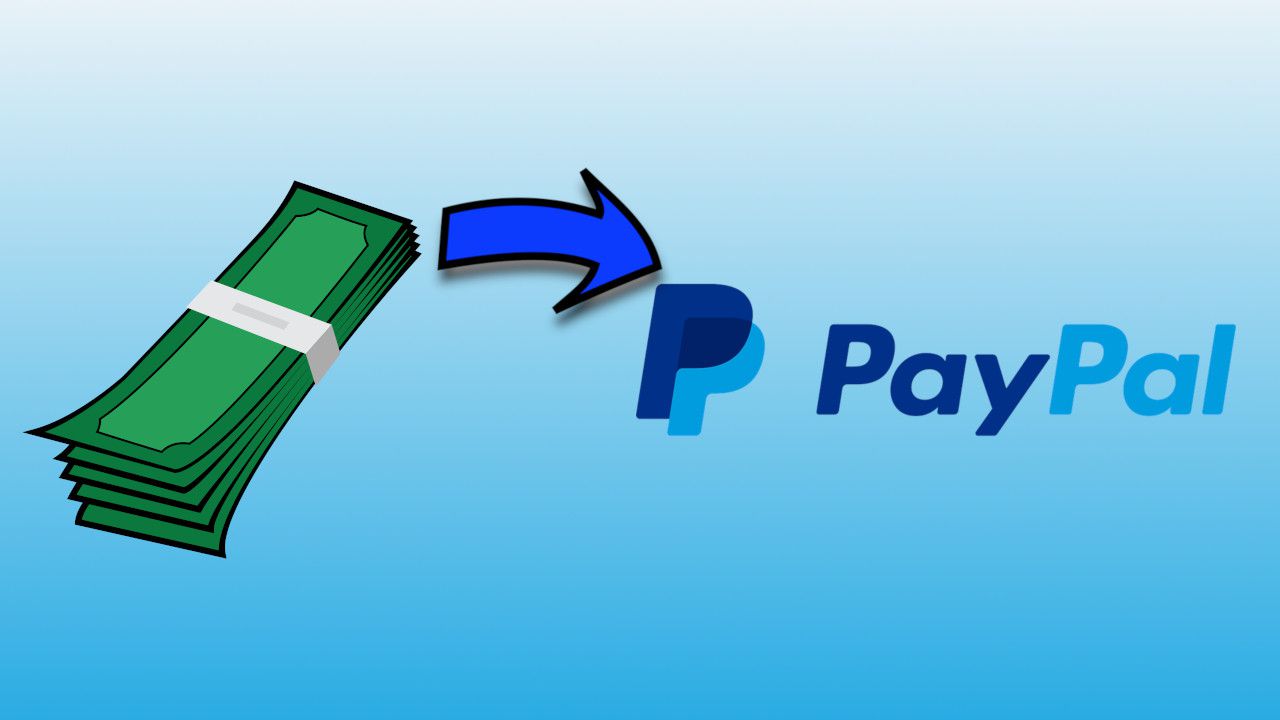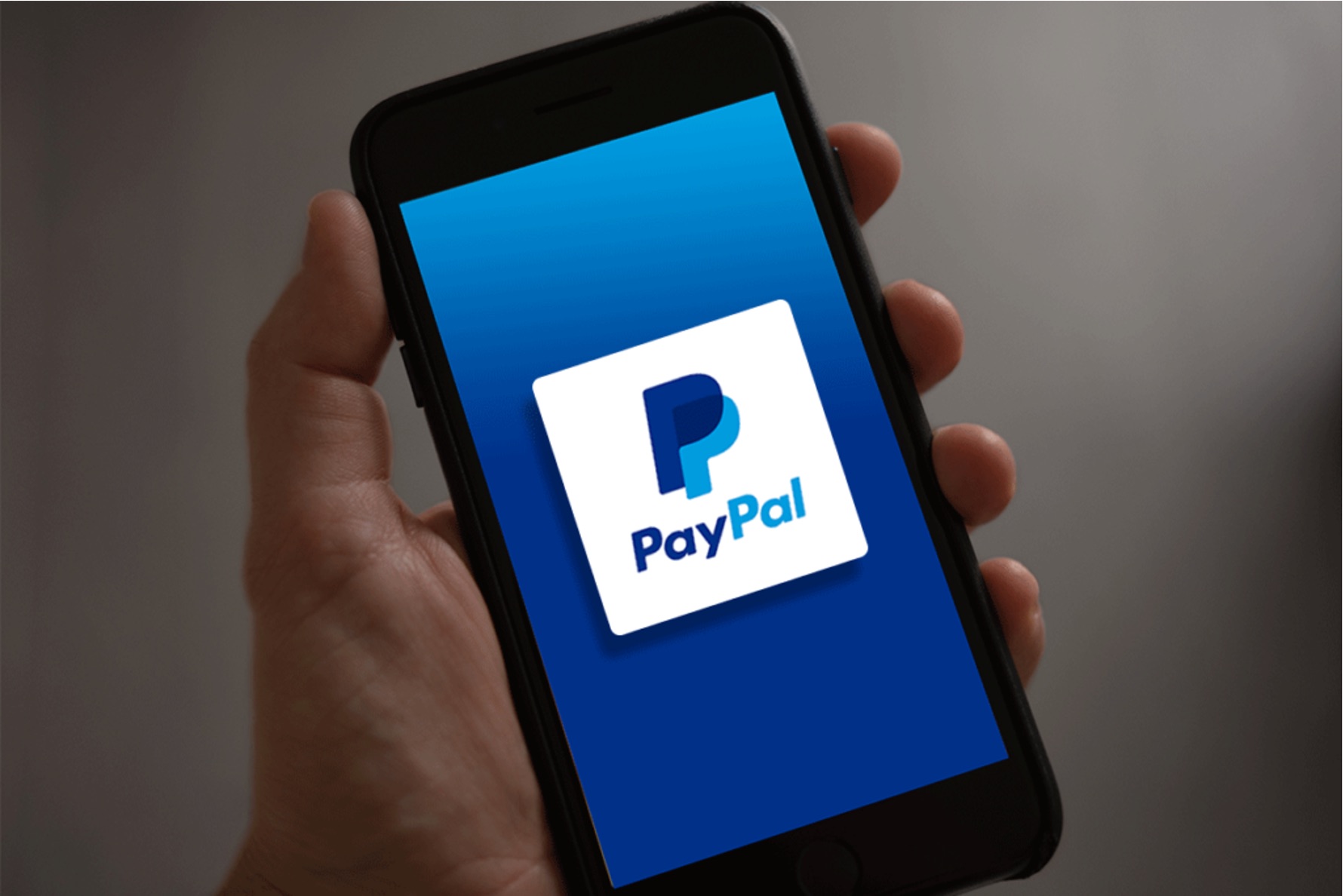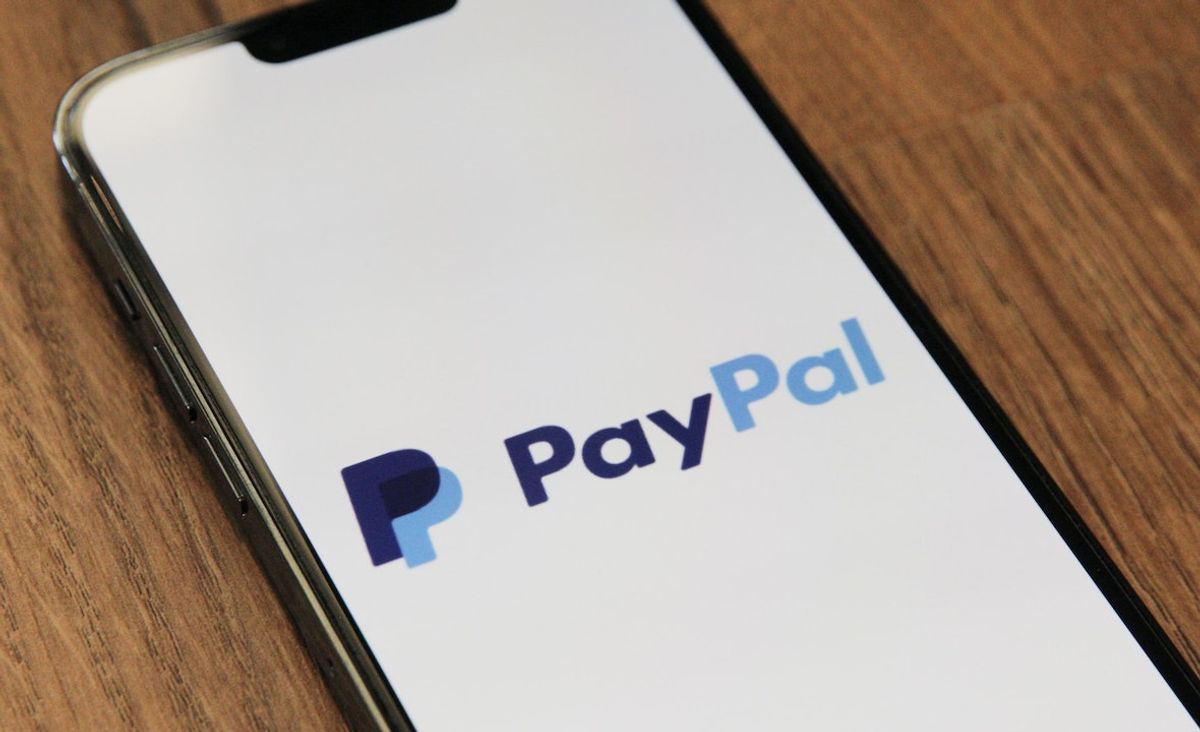Introduction
When it comes to managing finances, security is a top priority for both individuals and businesses. In the world of banking, fraud prevention and protection have never been more critical. With the rise of sophisticated cybercrime and fraudulent activities, banks have implemented various measures to safeguard against unauthorized transactions.
One such measure is Positive Pay, a security service offered by banks to help businesses detect and prevent check fraud. It provides an added layer of protection and ensures that only authorized checks are processed. In this article, we will explore what Positive Pay is, how it works, and the benefits it offers.
Positive Pay is a service that helps banks validate the authenticity of checks presented for payment. It allows businesses to upload information about issued checks into a secure online system. This information includes details such as the check number, date, and the amount.
When a check is presented for payment, the bank compares the details of the presented check with the information uploaded by the business. If there is a match, the check is considered authorized, and the payment is processed as usual. However, if there is a discrepancy or mismatch, the bank alerts the business for further verification before processing the payment.
The implementation of Positive Pay has significantly reduced instances of check fraud by adding an extra layer of security. It acts as a deterrent for criminals who forge or alter checks, as they are less likely to pass through the rigorous verification process.
Moreover, Positive Pay minimizes the risk of financial loss for businesses by ensuring that only valid checks are honored. It also saves valuable time and resources by automating the verification process, reducing the chances of manual errors that can occur when cross-checking physical checks against records.
Businesses across various industries can benefit from implementing Positive Pay. Whether you are a small business owner or a large corporation, the security and peace of mind it provides are invaluable. By taking advantage of Positive Pay, you can safeguard your organization’s financial assets and protect yourself from potential fraud attempts.
In the following sections, we will dive deeper into how Positive Pay works, the specific benefits it offers, and essential tips for effectively using this service to maintain the security of your banking activities.
What is Positive Pay?
Positive Pay is a fraud prevention service offered by banks that helps businesses protect themselves against check fraud. It is a proactive measure designed to detect and prevent unauthorized or altered checks from being processed. This service acts as a powerful deterrent for fraudsters and provides peace of mind to businesses by strengthening the security of their financial transactions.
Positive Pay works by allowing businesses to submit certain information about their issued checks to the bank. This information typically includes the check number, account number, issue date, and the check amount. The bank securely stores this data in a centralized system.
When a check is presented for payment, the bank’s system matches the details of the presented check against the information submitted by the business. If there is an exact match, the check is considered authorized, and the payment is processed without any issues.
However, if there is a discrepancy between the presented check and the submitted information, the bank alerts the business before processing the payment. The business then has the opportunity to review the potentially fraudulent check and decide whether to approve or decline it.
Positive Pay acts as a safeguard against various forms of check fraud, including counterfeit checks, altered checks, and forged signatures. By implementing Positive Pay, businesses can significantly reduce the risk of financial loss and protect their accounts from unauthorized transactions.
It is important to note that Positive Pay is not a guarantee against fraud, but rather an additional layer of protection that makes it much more difficult for criminals to successfully commit check fraud. It is a proactive measure that empowers businesses to detect and prevent fraudulent activities in their banking transactions.
Positive Pay is especially beneficial for businesses that issue a large number of checks or deal with high-value transactions. It is commonly used by companies across various industries, including manufacturing, retail, healthcare, and financial services.
In the next section, we will explore in detail how Positive Pay works and the specific steps involved in the verification process. Understanding the inner workings of Positive Pay will help businesses make informed decisions about implementing this valuable security service.
How does Positive Pay work?
Positive Pay operates on a straightforward and robust process that enables banks to validate the authenticity of checks presented for payment. By leveraging advanced technology and secure systems, Positive Pay helps businesses detect and prevent check fraud effectively.
The process of Positive Pay can be broken down into several key steps:
- Check Issuance: When a business prepares to issue checks, they compile relevant information about each check, such as the check number, account number, issue date, and the check amount. This information is typically transferred to the bank either through a secure online portal or by uploading a file containing the check details.
- Check Verification: Once the information is received by the bank, it is stored in a centralized system. When a check is presented for payment, the bank’s system uses this information to verify the details of the check against the submitted data. This verification process helps identify any discrepancies or inconsistencies.
- Exception Review: If a presented check does not match the submitted information, it is considered an exception. The bank’s system generates an alert and sends it to the business, notifying them of the discrepancy. The business can then review the check and either approve or decline it based on their assessment.
- Decision-making: When reviewing an exception, the business has several options. They can authorize the payment if the check is legitimate but may have minor discrepancies or errors. Alternatively, they can decline the payment if the check is deemed fraudulent or suspicious. In some cases, the business may need to request additional information or clarification from the presenting party before making a final decision.
- Payment Processing: Once a decision is made by the business, the bank proceeds with the payment accordingly. If the check is approved, it is processed, and the funds are transferred from the business’s account to the payee’s account. If the check is declined, the payment is not processed, and the funds remain intact.
The efficiency and effectiveness of Positive Pay lie in the real-time verification and alert system. By promptly identifying potential fraudulent checks, businesses can take immediate action to protect themselves from financial losses.
It’s worth mentioning that the specific processes and features of Positive Pay may vary depending on the bank and the chosen service package. Some banks may offer additional features, such as image verification, where the business can view images of presented checks to aid in the decision-making process.
In the next section, we will outline the benefits that Positive Pay offers to businesses. Understanding these advantages will highlight the value of implementing this fraud prevention service in your banking activities.
Benefits of Positive Pay
Positive Pay offers numerous benefits to businesses that implement this fraud prevention service. By adding an extra layer of security to their banking activities, businesses can enjoy the following advantages:
- Fraud Prevention: One of the primary benefits of Positive Pay is its ability to detect and prevent check fraud. By comparing the details of presented checks with the information submitted by the business, any discrepancies or suspicious activities can be identified early on. This helps safeguard businesses against financial loss and potential reputational damage.
- Enhanced Security: Positive Pay provides businesses with an enhanced level of security in their financial transactions. By leveraging advanced technology and secure systems, it significantly reduces the risk of counterfeit checks, altered checks, and forged signatures. This added security instills confidence in businesses and promotes trust in their financial operations.
- Time and Cost Savings: Positive Pay automates the check verification process, saving businesses valuable time and reducing the chances of manual errors. Rather than manually cross-checking physical checks against records, businesses can rely on the bank’s system to verify the authenticity of each check. This streamlines operations and frees up resources for more strategic tasks.
- Easy Implementation and Integration: Most banks offer Positive Pay as an add-on service that can be easily implemented and integrated into existing banking workflows. The process of submitting check details and reviewing exceptions is typically user-friendly and intuitive. Businesses don’t need to undergo complex technical setups or invest in additional infrastructure to take advantage of Positive Pay.
- Customization and Flexibility: Positive Pay services can often be customized to cater to the specific needs of businesses. Banks may offer different service packages with varying features and levels of functionality. This allows businesses to choose the options that align with their requirements and budgets, ensuring a tailored and flexible solution.
- Peace of Mind: Implementing Positive Pay gives businesses peace of mind knowing that their financial transactions are being actively monitored and protected. It eliminates the constant worry of falling victim to check fraud and allows businesses to focus on their core operations without interruptions or financial setbacks.
By leveraging the benefits of Positive Pay, businesses can mitigate the risks associated with check fraud while maintaining the efficiency and security of their banking activities.
In the next section, we will discuss how businesses can effectively implement Positive Pay in their financial operations. Implementing the service correctly is essential for maximizing its benefits and ensuring optimal fraud prevention.
Implementing Positive Pay in Your Banking
Implementing Positive Pay in your banking activities is a proactive step towards strengthening the security of your financial transactions. By following these steps, you can effectively integrate and utilize Positive Pay to safeguard your business against check fraud:
- Evaluate Banks: Start by researching and evaluating different banks that offer Positive Pay services. Compare their offerings, fees, and features to find the best fit for your business. Consider factors such as the bank’s reputation, customer service, and the ease of integration with your existing banking processes.
- Understand Service Packages: Banks typically offer different service packages for Positive Pay, tailored to meet the needs of different businesses. Understand the features and limitations of each package and choose the one that aligns with your requirements. Consider factors such as the number of allowed checks, exception levels, and additional services like image verification.
- Collect and Submit Check Information: Once you have chosen a bank and signed up for their Positive Pay service, start collecting and organizing the necessary information about your issued checks. This typically includes the check number, account number, issue date, and the check amount. Ensure the accuracy of this information to avoid any discrepancies during the verification process.
- Secure Data Transmission: Safely transmit the check information to the bank’s designated system. Most banks provide secure online portals or file upload options for submitting this data. It is crucial to follow the bank’s guidelines for data submission to ensure the confidentiality and integrity of your sensitive information.
- Regularly Monitor Exceptions: Once your check information is submitted and processed, it is essential to actively monitor exceptions. Regularly check the alerts or notifications provided by the bank when a presented check does not match the submitted information. Promptly review and make decisions about these exceptions to prevent any potential fraud attempts.
- Establish Communication Channels: Maintain open lines of communication with your bank regarding Positive Pay. Establish clear channels for discussing exceptions, clarifying information, and resolving any concerns or inquiries. This ensures smooth and timely decision-making, allowing for efficient processing of payments.
- Periodic Reviews and Updates: Periodically review your Positive Pay service and its effectiveness in preventing check fraud. Assess your business’s needs and consider if any adjustments or upgrades to the service package are required. Stay informed about new fraud prevention technologies and techniques to stay proactive in protecting your banking activities.
By following these implementation steps and maintaining diligence in monitoring and reviewing exceptions, you can effectively utilize Positive Pay in your banking operations. Coupled with your existing internal controls and security measures, Positive Pay becomes a powerful tool in safeguarding your business against the ever-evolving threat of check fraud.
In the next section, we will provide some valuable tips for using Positive Pay effectively, ensuring optimal fraud prevention and overall security in your financial transactions.
Tips for Using Positive Pay Effectively
To maximize the effectiveness of Positive Pay and strengthen the security of your banking activities, consider the following tips:
- Maintain Accurate Check Records: Ensure that the check information you submit to the bank is accurate and up to date. Any discrepancies or errors in the check details can cause unnecessary exceptions and delays in the payment verification process.
- Implement Dual Verification Processes: Establish internal controls within your organization to verify the accuracy of issued checks before submitting the information to the bank. This can include a review by multiple authorized personnel to minimize the chances of errors.
- Review Exceptions Promptly: Regularly check and review any exceptions alerted by the bank’s system. Promptly analyze the presented checks and make decisions within the designated timeframe to prevent fraudulent transactions and ensure timely payments.
- Communicate with Your Bank: Maintain a strong line of communication with your bank regarding Positive Pay. Understand their processes, reporting mechanisms, and any updates or changes to the service. This will help you stay informed and make informed decisions regarding exception handling.
- Train and Educate Employees: Provide adequate training to your employees on using Positive Pay effectively. Educate them about the importance of accurate check information, exception reviews, and the overall benefits of the service. This will help create a culture of awareness and vigilance against check fraud.
- Regularly Assess Service Performance: Periodically review the performance of your Positive Pay service in detecting and preventing check fraud. Assess any patterns or trends in exception types and take appropriate measures to strengthen internal controls or make adjustments to your service package as necessary.
- Stay Informed About Security Practices: Stay up to date with the latest security practices and trends in fraud prevention. Attend industry conferences, workshops, or webinars to enhance your knowledge about check fraud and effective security strategies. Implement additional security measures whenever possible to complement Positive Pay.
- Alert Your Bank of Any Changes: Inform your bank promptly of any changes in authorized signatories, account details, or other relevant information. Keeping your bank informed ensures that they have the most accurate and updated information to verify your checks effectively.
- Regularly Reconcile Bank Statements: Conduct regular reconciliations of your bank statements to ensure that all transactions are accounted for and align with your records. This provides an additional layer of verification and helps detect any potential fraudulent activity.
By implementing these tips, you can enhance the effectiveness of Positive Pay in preventing check fraud and maintaining the security of your banking activities. Remember, fraud prevention is an ongoing effort, and staying proactive is key to protecting your business against evolving threats.
In the following section, we will address some frequently asked questions about Positive Pay to provide a comprehensive understanding of this valuable fraud prevention service.
Frequently Asked Questions about Positive Pay
Here are some commonly asked questions about Positive Pay and their answers:
- Q: How much does Positive Pay cost?
A: The cost of Positive Pay can vary depending on the bank and the service package you choose. It’s recommended to contact your bank directly to inquire about the pricing details and any associated fees. - Q: Can Positive Pay detect all types of check fraud?
A: While Positive Pay is a powerful tool in detecting and preventing check fraud, it may not detect all types of fraud, such as account takeover or identity theft. It primarily focuses on validating the authenticity of checks based on the submitted information. - Q: Is Positive Pay only for businesses?
A: Positive Pay is commonly used by businesses that issue a significant number of checks. However, some banks offer Positive Pay services for personal accounts as well. Contact your bank to inquire about the availability of Positive Pay for personal use. - Q: What happens if an exception is approved and later found to be fraudulent?
A: If an exception is approved but later found to be fraudulent, it is crucial to report the fraudulent activity to your bank immediately. The bank will then work with you to investigate and take necessary actions to mitigate any financial losses. - Q: Can Positive Pay be used for electronic payments or wire transfers?
A: Positive Pay is typically designed for check transactions. However, some banks may offer additional services or integration options for electronic payments or wire transfers. Contact your bank to inquire about their capabilities in this regard. - Q: Is Positive Pay 100% foolproof in preventing check fraud?
A: While Positive Pay is an effective tool in preventing check fraud, it is not foolproof. Criminals are continually evolving their tactics, and new forms of fraud may arise. However, Positive Pay significantly reduces the risk of check fraud and acts as a strong deterrent.
If you have any specific questions about Positive Pay or its implementation, it is recommended to contact your bank directly. They will be able to provide you with accurate and up-to-date information based on their specific services and offerings.
In the final section, we will wrap up the article by summarizing the key points discussed in this guide.
Conclusion
Positive Pay is a valuable fraud prevention service offered by banks to help businesses protect themselves against check fraud. By utilizing advanced technology and secure systems, Positive Pay provides an added layer of security to verify the authenticity of checks presented for payment.
Throughout this article, we have explored what Positive Pay is, how it works, and the benefits it offers. We discussed the importance of accurately submitting check details, promptly reviewing exceptions, and maintaining open lines of communication with your bank. By implementing Positive Pay effectively, businesses can significantly reduce the risk of financial loss and protect themselves against potential fraud attempts.
Positive Pay serves as a powerful deterrent to criminals who attempt to forge or alter checks. Its automation and verification processes save valuable time and resources, streamlining financial operations for businesses. Additionally, the peace of mind it provides allows businesses to focus on their core operations without constant worry about check fraud.
It is crucial to note that while Positive Pay is a robust security measure, it is not foolproof. Businesses should also maintain other internal controls and stay informed about evolving security practices and fraud prevention techniques.
If you are considering implementing Positive Pay in your banking activities, contact your bank to inquire about their specific services and offerings. They will guide you through the process of signing up and provide you with the necessary information to get started.
By proactively implementing Positive Pay and staying vigilant against check fraud, businesses can safeguard their financial transactions, protect their assets, and maintain the trust of their customers and partners.
Thank you for reading this guide. We hope it has provided you with valuable insights into Positive Pay and its benefits. Stay proactive and prioritize security in your banking activities to ensure the continued success and stability of your business.

























